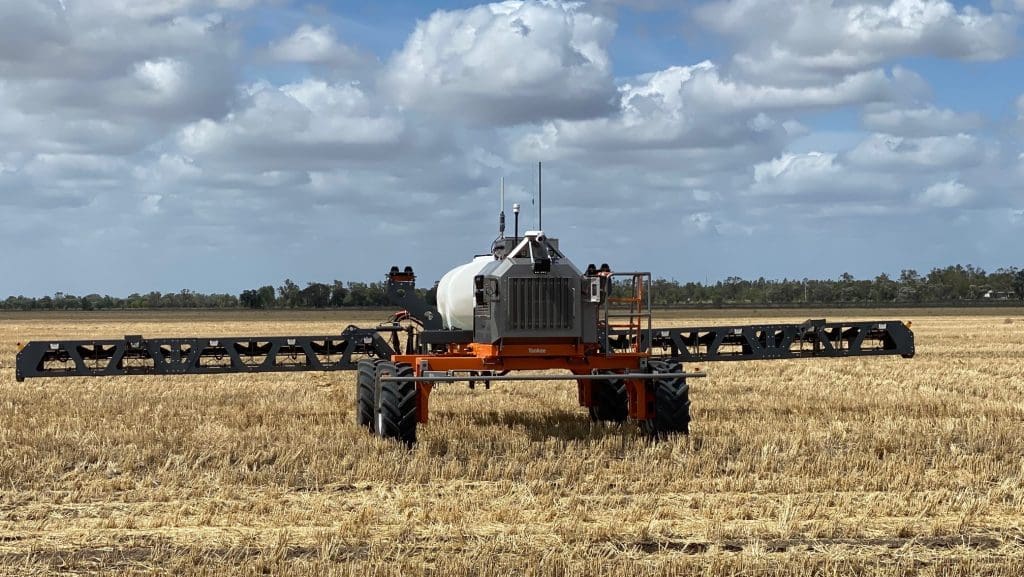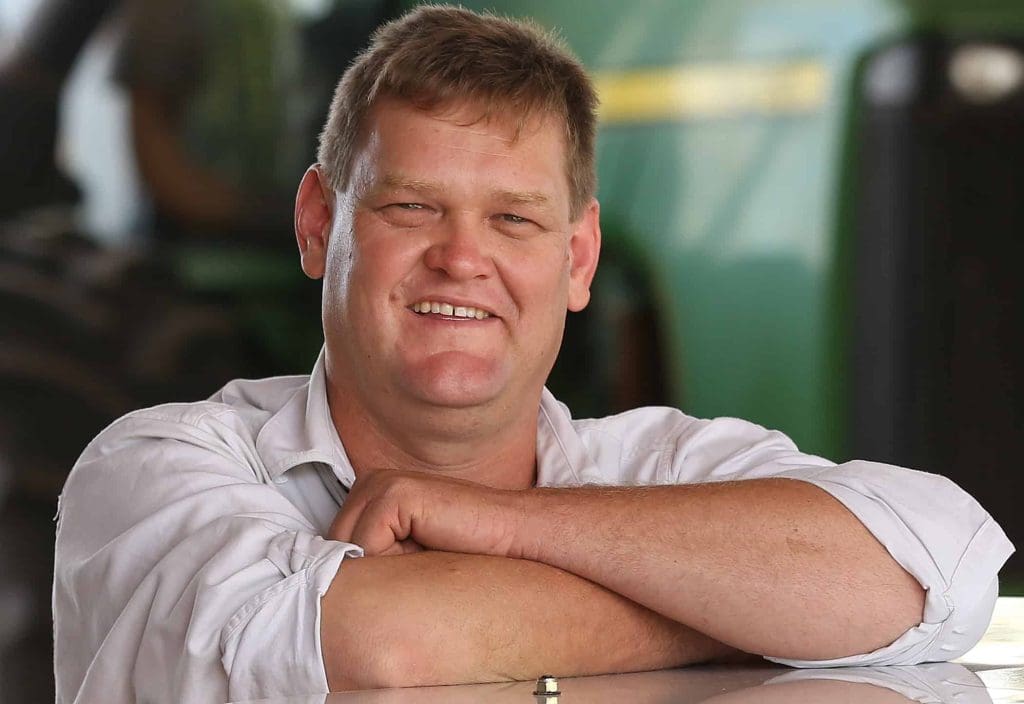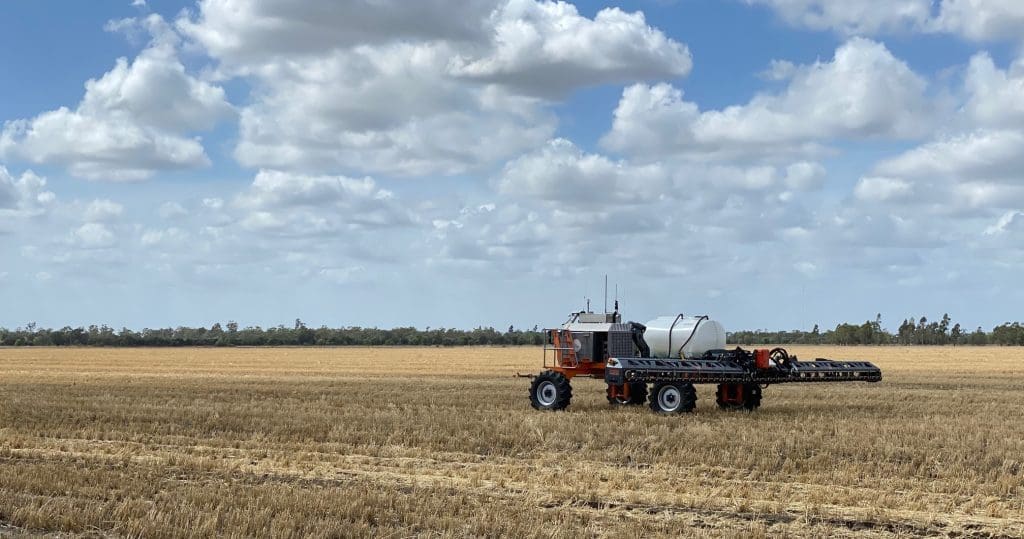
Visitors to AgTech 21 had a chance to take a close look at one of the SwarmFarm robotic machines that was typical of the many in the field. It had a 12-metre boom, a 1500-litre tank, Weedit technology to spray weeds, and was set on three-metre centres for controlled traffic.
IT’S been a while since Central Queensland-based autonomous farming robot company, SwarmFarm Robotics, was referred to as an emerging ag-tech ‘startup’ company.
Since forming in 2009 the business has expanded into a fully-fledged commercial operation that now employs a team of 23 people and manufactures the autonomous machines at its base at Gindie near Emerald.
Telling the story of the company’s journey at this week’s AgTech21 conference in Emerald, SwarmFarm Robotics chief executive officer Andrew Bate said back when SwarmFarm started “you couldn’t buy a drone at Harvey Norman, there was no Google Driverless Car Program and Uber didn’t exist”.
Since then the business has harnessed the fast-developing world of autonomous technology to design and manufacture high-tech, robotic machines that are now operating on farms throughout Australia. Some have clocked up more than 6000 hours.
Autonomous farming systems
Mr Bate said the SwarmFarm concept was not about trying to automate agriculture but was more about creating autonomous farming systems and developing a fit for the technology in agriculture.
“The first use of our robots was spot spraying. It is a match made in heaven. The real fit for early adopters is in the spot spraying technology,” he said.

SwarmFarm Robotics chief executive officer Andrew Bate. (Photo: SwarmFarm)
Mr Bate said one of the biggest niches for the robotic spot-spraying machines was with producers who already had experience with weed detection technology on their farms and realised some of its shortcomings.
He said while camera-detection systems fitted to conventional, tractor-towed boomsprays saved a lot of chemical and killed really-hard-to-kill weeds, every pass missed a few weeds that were hidden under the stubble or that were too small for the camera to pick up.
“The minute they finished there was a little crop of weeds coming up behind them,” he said.
Mr Bate said that was where the autonomous robot system came into its own because it allowed for many more passes that could clean up the residue weeds.
“Farmers who have deployed our robots are using different agronomy to their neighbours. They are running them six to eight passes a year instead of two to three passes (of a traditional boomspray behind a tractor). Because it is autonomous it can be in a paddock more often and have better timing of application,” he said.
“We have growers down south this year whose fallow weed control costs were $4.30-$4.50/hectare. That was from behind the header all the way through to the end of March.
“They did it purely because every spray was a spot spray. And if you spray a weed when it is only small only one nozzle will switch on, but if you wait for it to be bigger three or four nozzles will turn on and you will be using four times as much chemical, even though you are spot spraying.
“By getting in super early when weeds are super small, they are easier to kill and you can cut herbicide rates in half again compared to traditional spot spraying. That is how the cumulative benefits start to come through.”

End-to-end business
Mr Bate said another key to the success of the business was that it was set up as an end-to-end company where everything was manufactured in-house and sold direct, and support was offered for the life of the robot.
“Our robots go out on a three-year operating lease. At the end of three years we change the robot out for a new model,” he said.
“There are a couple of reasons for that. It is new technology which is moving really fast. We don’t want to be supporting these models in five years’ time. There will be better technology. We don’t want old machines out there that we can’t support anymore.
“The other reason is we have to have some level of control over where our robots go. If I sell a robot to someone in Moree, he puts it on eBay and sells it to Indonesia. The next thing it is running through the school grounds mowing the grass with kids running around it playing soccer.
“We have to have some level of control over where our robots go and make sure we can support them and maintain them. In the three-year lease we do everything, except the oil changes and tyre changes.”
Grain Central: Get our free cropping news straight to your inbox – Click here

HAVE YOUR SAY